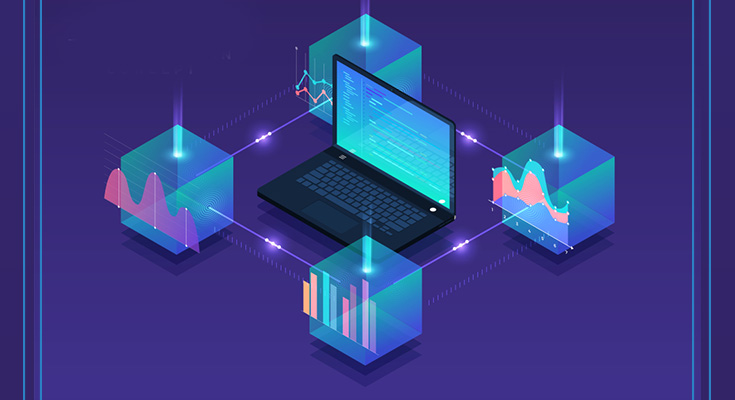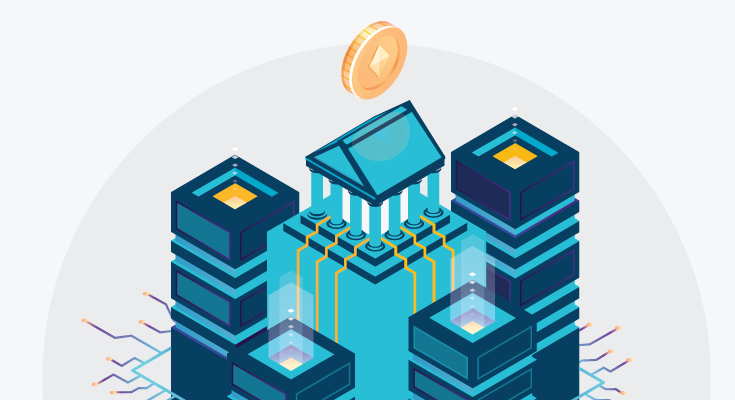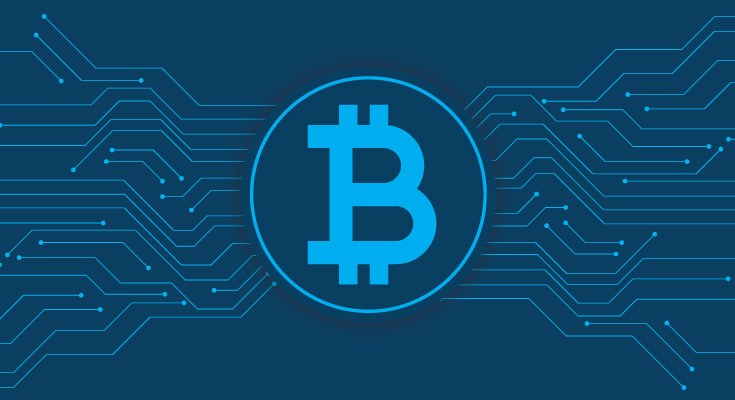What is Blockchain Technology and How Blockchain Works?

Blockchain technology, also known as Distributed Ledger Technology (DLT), helps in maintaining the history of any digital asset immutable and transparent. The technology uses decentralization and cryptographic hashing to make the data unchangeable and transparent. While blockchain is widely popular in the cryptocurrency industry, other industries don’t know what is blockchain technology or how blockchain works?
A simple way to define blockchain technology is like Google Doc. Let’s say that you create a Google Doc and share it with a bunch of people, the document is distributed instead of transferred. This sharing of documents creates a decentralized distribution chain, which gives everyone access to the same information at the same time. Everyone can access the information and data at any given time, not a single person is in charge of changing and sharing the information.
As all the involved parties can see the changes being made in real-time, transparency of data is ensured. If you’re wondering how does blockchain secure data, then you should know the technology follows certain protocols that make the data extremely secure. Using blockchain for fraud prevention is an idea that’s been thought over a lot in recent times.
While blockchain technology is much more complicated than a simple Google Docs file, it does help in giving an idea to users how blockchain works in banking. Sooner or later, blockchain technology will be integrated into almost every industry.
How Does Blockchain Work?
The main purpose of having blockchain technology is to let people share data, share data in a secure and immutable way. Blockchain technology works on three fundamental principles including blocks, nodes, and miners.
- Blocks
The term blockchain consists of two things, blocks, and chains. Every chain consists of several blocks and it contains 3 main elements:
- The data in the block.
- A 32-bit whole number called a nonce, the nonce is randomly generated whenever a new block is created, which then leads to the generation of a block header hash.
- The hash is a 256-bit number embedded into the nonce, it has to start with a number of zeroes.
When a new chain is created, a nonce generates the cryptographic hash. The data in the block is signed and tied to the nonce and has unless it is mined.
- Miners
Miners keep creating new blocks on the chains using a process called mining. In a blockchain every block contains its own nonce and hash, it also contains the hash of the previous block in the chain. Mining for new blocks isn’t easy, especially on large chains. Because the nonce is only 32 bits and the hash is 256, there are billions of combinations till the right combination is found. Whenever the miners find the right combination, a new block is created and added to the chain.
Making changes to previous blocks in the chain requires re-mining, not just the block with the change but all of the blocks that come after. This is why it is highly complex to manipulate any data on the blockchain. This is how blockchain works in banking, and it is crucial for banks to employ the technology to ensure the safety of data.
- Nodes
One of the most important concepts in blockchain technology is decentralization. Not a single computer or organization owns the chain which makes the information on it transparent. It is an online ledger via nodes that are connected to the chain. Nodes are any type of electronic device that keeps the copies of the blockchain and keeps the network under operating health.
Combining publicly available information with a variety of checks and balances helps the blockchain maintain integrity and creates user trust among users.
The Rise of Blockchain’s Technology
Most people define blockchain technology as its use in cryptocurrencies. Cryptocurrencies are a type of online currency or online tokens such as Bitcoin, Ethereum, or Dogecoin that can be used to buy goods and services. Just like any digital type of cash, crypto can be used to buy anything from as small as a lunch to as big as a car. Cryptocurrency is not like cash, crypto uses blockchain to operate as a public ledger and as an enhanced security system, so all the online transactions are recorded and secured.
As of right now, there are around 8,000 types of cryptocurrencies in the world and they have a market value of $1.6 trillion, with Bitcoin being the market leader. Cryptocurrencies are slowly becoming more popular over the years among investors. Here are some of the reason why investors are becoming more and more interested in cryptocurrencies:
- Blockchain’s security makes the theft of data and information almost impossible as almost all cryptocurrencies have their own indisputable and identifiable number which is attached to one owner.
- Cryptocurrencies don’t operate under individualized currencies and central banks. With blockchain, crypto can be sent anywhere in the world without the need for currency exchange or without the interference of central banks.
- More and more firms are coming around to the idea of blockchain-based technologies. In February 2021, Tesla announced that they would invest 1.5 billion into Bitcoin and accept Bitcoin as payment of its cars.
How Blockchain Works In Banking?
Apart from cryptocurrency, blockchain technology can also be implied in other industries. Not a lot of people know how blockchain works in banking. Banks and financial institutions can store customer data on blockchain to make sure the confidential customer information stays secure.
DIRO’s online document verification technology can verify documents instantly. Banks can use the technology and verify customer identity and improve the overall customer experience during remote customer onboarding. DIRO’s technology places verified customer documents on the blockchain to make the information secure and immutable.












